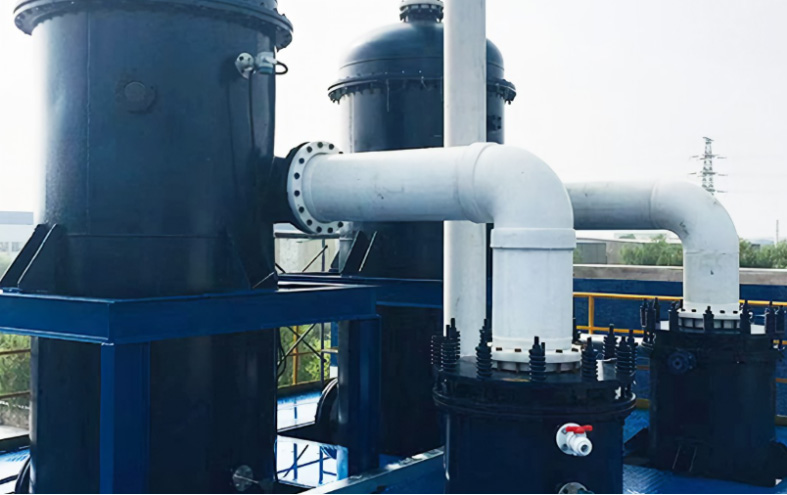Graphite is widely used in chemical equipment manufacturing due to its excellent corrosion resistance, electrical conductivity, and thermal stability. However, graphite exhibits relatively weak mechanical properties, particularly under impact and vibration conditions. Glass fiber, as a high-performance composite material, offers significant advantages when applied to graphite-based chemical equipment due to its heat resistance, corrosion resistance, and superior mechanical properties. Specific advantages include:
(1) Enhanced Mechanical Performance
The tensile strength of glass fiber can reach 3,450 MPa, far exceeding that of graphite, which typically ranges from 10 to 20 MPa. By incorporating glass fiber into graphite materials, the overall mechanical performance of the equipment can be significantly improved, including resistance to impact and vibration.
(2) Corrosion Resistance
Glass fiber demonstrates excellent resistance to most acids, alkalis, and solvents. While graphite itself is highly corrosion-resistant, glass fiber may offer superior performance in extreme chemical environments, such as high-temperature and high-pressure conditions, oxidizing atmospheres, or hydrofluoric acid environments.
(3) Improved Thermal Properties
Glass fiber has an extremely low coefficient of thermal expansion (CTE) of approximately 5.0×10−7/°C, ensuring dimensional stability under thermal stress. Additionally, its high melting point (1,400–1,600°C) grants outstanding high-temperature resistance. These characteristics enable glass fiber-reinforced graphite equipment to maintain structural integrity and functionality in high-heat environments with minimal deformation.
(4) Weight Advantages
With a density of approximately 2.5 g/cm3, glass fiber is slightly heavier than graphite (2.1–2.3g/cm3) but significantly lighter than metallic materials like steel or aluminum. Integrating glass fiber into graphite equipment enhances performance without substantially increasing weight, preserving the equipment’s lightweight and portable nature.
(5) Cost Efficiency
Compared to other high-performance composites (e.g., carbon fiber), glass fiber is more cost-effective, making it advantageous for large-scale industrial applications:
Raw Material Costs: Glass fiber primarily uses low-cost glass, whereas carbon fiber relies on expensive acrylonitrile.
Manufacturing Costs: Both materials require high-temperature and high-pressure processing, but carbon fiber production involves additional complex steps (e.g., polymerization, oxidation stabilization, carbonization), driving up costs.
Recycling and Disposal: Carbon fiber is difficult to recycle and poses environmental risks if improperly handled, leading to higher disposal costs. Glass fiber, in contrast, is more manageable and eco-friendly in end-of-life scenarios.
Post time: Apr-24-2025






